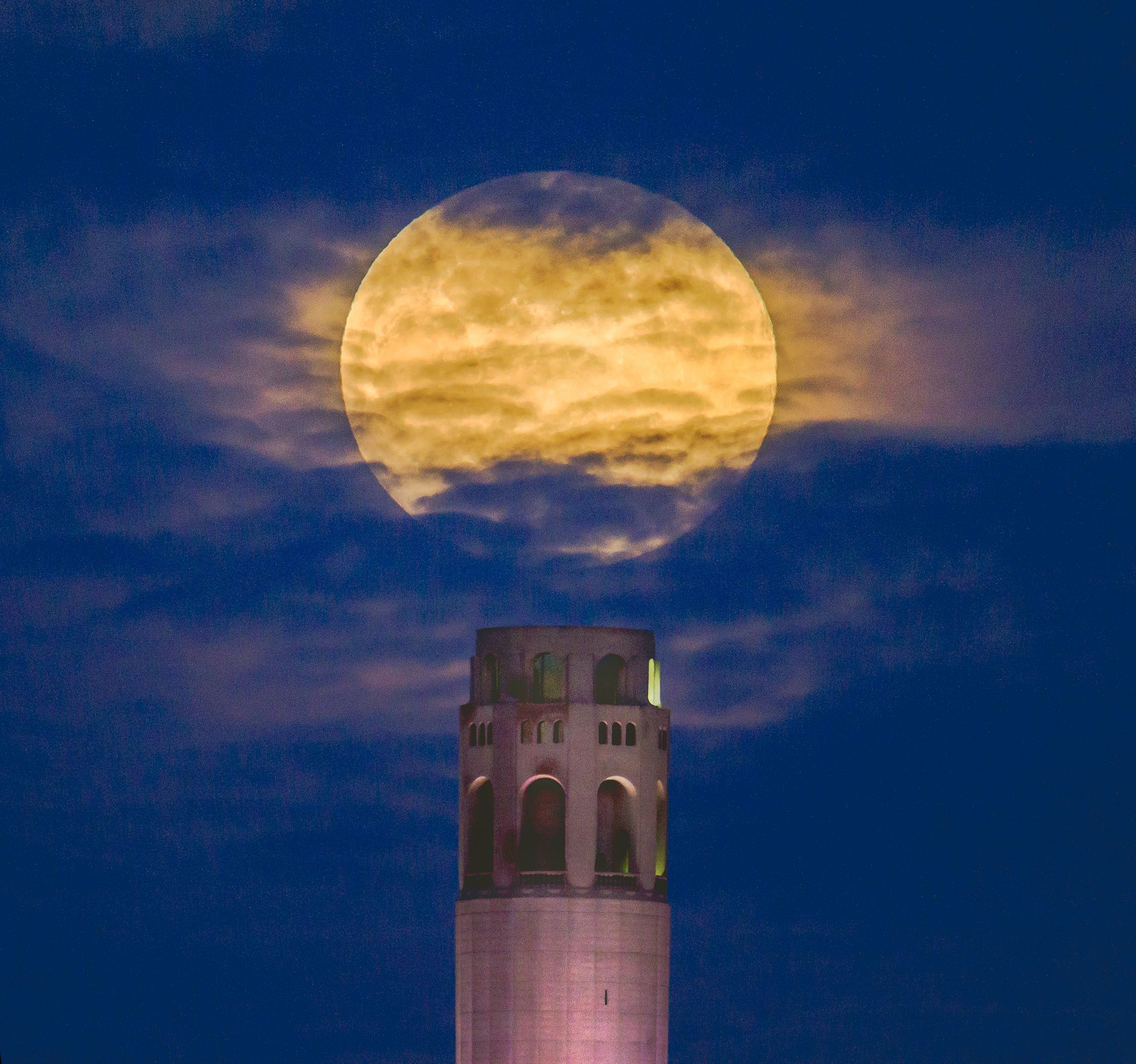The first of two supermoons will be visible from the Bay Area tonight
If the moon appears bigger and brighter than usual tonight, your eyes aren’t deceiving you.
Tonight, the first of this month’s two supermoons will be visible over the Bay Area, meaning the moon will be full at a point when it’s especially close to Earth. The second supermoon, on Aug. 30, will also be a “blue moon,” or the second to emerge in the same month. Typically, full moons appear once a month.
It’s rare for the two phenomena to occur together, according to Jon Rees, a support astronomer for Lick Observatory on Mount Hamilton. Blue moons themselves are “relatively uncommon (hence the phrase ‘once in a blue moon’),” Rees told SFGATE by email. “Since we only get a few supermoons per year, having two in a month is even more of a rare occurrence. It last happened back in 2018.”
The official astronomical term for a supermoon is “lunar perigee syzygy,” and the phenomenon happens when the moon is near perigee, or at its closest distance from Earth — only about 224,000 miles away, explained Ben Burress, a staff astronomer at Chabot Space & Science Center in Oakland. He described the moon’s orbit around Earth as an elliptical, or egg-shaped, pattern, rather than circular, so its distance from our planet varies slightly. When it’s at apogee, or its farthest point from Earth, it’s roughly 251,000 miles away.
“When the moon is near perigee and we have a supermoon, it is about 15% larger and 30% brighter than a full moon at apogee,” Burress wrote. “My ‘six cent’ analogy for the apparent size of the moon at apogee and at perigee is the difference between the size of a penny and a nickel.”
As is often the case with celestial phenomena, supermoons tend to be “a little overhyped,” Rees wrote. They usually happen three or four times a year — the first this year occurred in July, while the fourth and last can be seen in September — and result from the normal motions of the moon and Earth.
“However, the public is often fascinated by a supermoon,” wrote Gerald McKeegan, an adjunct astronomer at Chabot Space & Science Center — and for good reason. If the sun, Earth and moon align particularly close together, the stronger gravitational pulls of the sun and the moon can produce king tides.
It’s worth taking a look up — and the supermoon will be easy to spot.
“The full moon rises about the same time as sunset, and remains in the night sky all night long, setting the next dawn,” Burress wrote. “All you have to do to see the supermoon is go outside and look at the big bright light in the sky!”
Source: SFGATE


